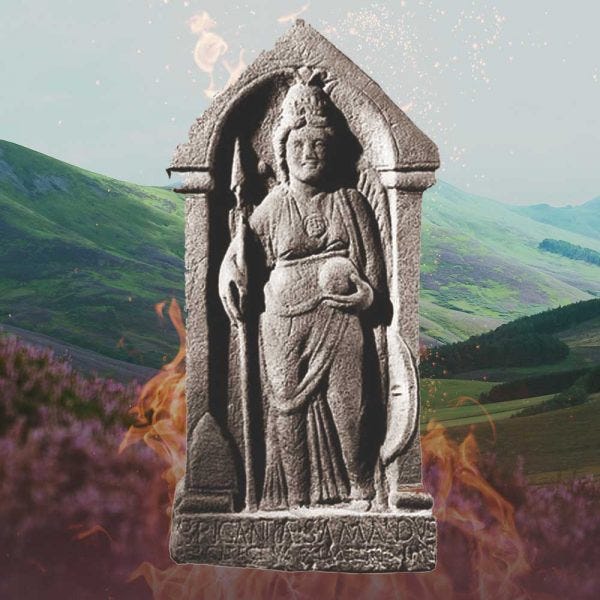Brigantia's name, derived from Proto-Celtic *brigantī, profoundly means ‘High One ', a title befitting her divine status.
This goddess appears in several locations across the Celtic world, sometimes likened to Brigindo in Gaul or Brigit in Ireland.
Brigantia, a Celtic goddess, was not confined to a single region. Her influence was felt across the British Isles, where she was revered as a symbol of fertility and abundance.
Brigantia was often depicted as a powerful, majestic woman, regally dressed in a long, flowing robe and adorned with jewels. She was also sometimes depicted with a spear or a shield, symbols of her power. Brigantia was often associated with rivers, springs, and other water sources and was thought to be a guardian of these precious resources.
Brigantia was believed to protect people and bring fertility to the land. She was worshipped in stone carvings, and her cult was closely related to the cult of the river goddess Sequana. Offerings to Brigantia usually included corn, bread, wine, other foodstuffs, and ceremonial objects such as coins and small figurines.
In the Roman period, Brigantia was syncretised with goddesses of the Roman pantheon, such as Juno and the goddess of abundance, Abundantia. As a result, her cult spread throughout the Roman Empire, and her worshipers could be found from Spain to Syria.
Today, Brigantia has been largely forgotten, but her memory continues to live in the British landscape. The hills and mountains of the British Isles are still referred to as The Brigantes, a name said to be an homage to the ancient goddess.
Brigantia reminds us that the ancient Britons had a rich and vibrant spiritual life. Her legacy is one of fertility, abundance, and protection, a reminder of power in ancient times.
Alan /|\
You might like to visit my new website, www.alanjonesUK.com, where you can find information about what I do, my work and another blog post.




